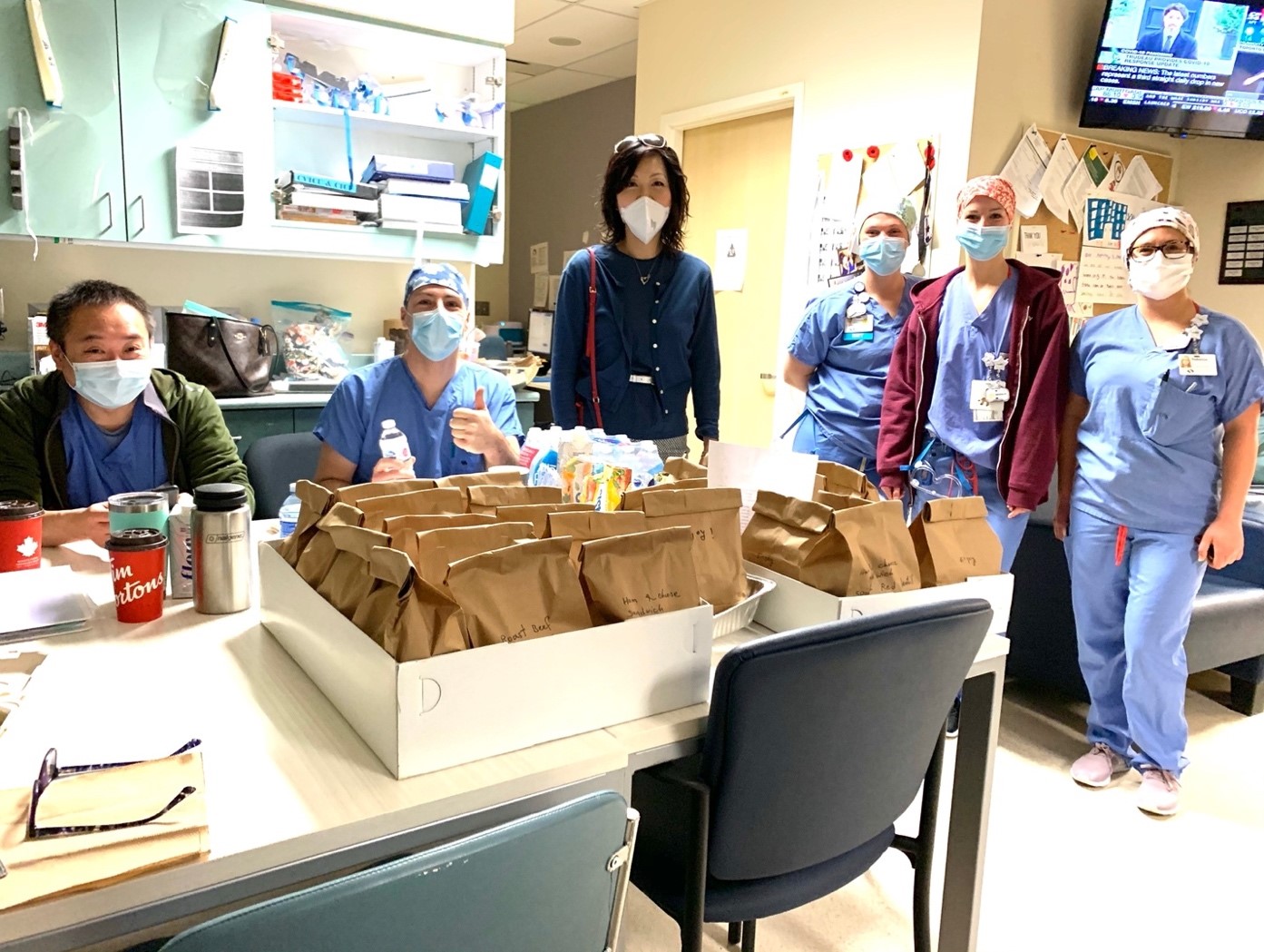Blog by Lily Kim
While chairing Holocaust Education Week (UJA Federation) and leading Equity for the Canadian Disability Studies Association (CDSA), I recognized the need to reconcile diverse intersectional perspectives in Canada. The current situation is widely viewed as a healthcare crisis brought about by the COVID-19 virus. However, the pandemic has revealed the existential plight of those most impacted within racialized communities; and different (or often same) identities with disabilities confronted daily by “impossible choices.” Appreciating the needs of marginalized females and severely impaired adults may require a constructive lens of historical or psychosocial trauma. This demands greater consideration of lived reality, including intersectional issues raised by differential exposure and limited access to supports or care.

In 2020, I voluntarily delivered facemasks and faceshields to Jewish Holocaust survivors, as well as food to hospital workers (inside Intensive Care Units). Two Black nurses were quick to express thanks when hot soup and bag lunches were wheeled to York Region staff rooms. Kitty Salsberg and a few Holocaust survivors were the first contributors who supported my community fundraising for the weekly meal delivery; it lasted from the beginning of the pandemic until the end of Spring. They had known terrible hunger in dehumanizing conditions during the Holocaust. However, supporter Judy Cohen recalled the kindness of a Black nurse, who helped sustain her throughout the sea voyage to Canada after surviving enslaved labour in Germany. Survivors implicitly understood intersectional dimensions of mental pain: differential exposure among disadvantaged groups with trajectories to stressors affected by their “disproportionate burden of psychological distress” (Walls and Whitbeck, 2011, 124). Past trauma could account for “hidden” disparities and health inequalities.
Different stressors or structural factors could also obstruct pathways to supports and services for vulnerable people. Kitty said, “Everyone doesn’t suffer to the same degree in a crisis; we need to support those who put everything on the line—especially for others.” Kitty had taught disadvantaged and “disabled” students in poor neighbourhoods of Toronto. She intentionally watched and advocated for Black and Asian youth: immigrants who were targeted; or due to language issues, were wrongly labelled as delayed learners with “special needs.” As Kitty personally knew from her mixed-ancestry family, Black and Jewish immigrants were particularly susceptible to threats. Yet for the interest of efficiency, institutions embodied corporate cultural norms, encouraging professionals to operate “in lane” with the false assumption that all people display equal capacities for agency in various situations.

However, identities that bear impairments or racialization face larger systemic and mental obstacles to enacting change with agency. Their distrust of certain therapies naturally occurs with cultural traumas from discriminatory policies (e.g., 20th century racial eugenics). Jewish deportees comprised the largest victim group of the Nazi system of extermination camps, such as Auschwitz-Birkenau. In continuity with Germany’s Aktion T4 program, this system shared a sinister connection to the horrendous euthanasia practice initiated in America: “defective” youngsters were selectively murdered from 1915 until World War II. The historical convergence of medical science and racially biased research was disturbingly seen in The Black Stork and Tuskegee Syphilis project (1932–72) in USA; as well, in nutrition experiments (1942–52) on children of the Salish First Nation in British Columbia (BC).
Empirical outcomes alone fail to capture the nuances of responsible design in situations of complex man-made disasters, such as mass violence or systemic crises consolidating from communicable disease (i.e., “host factors”). Instead of relying solely on suspected evidence to link inputs and interventions based on past outcomes, an ethic of care demands validating action or sensitive process change with enhanced situational awareness: creative perception, not profiling, is key. By adopting one metric, healthcare providers act adverse to treating and reporting higher “observed-to-expected” risk-adjusted mortality, often due to fears of negatively skewing results in reporting (mis-associated with poor quality of care). Without perceptive and willing intervention, racialized and impaired people also become deprioritized vaccine candidates; high-risk individuals remain terrified and robbed of the “greatest benefit” of COVID-19 support. One person with a stake in the existential discussion about vaccinations is CDSA executive, Dr. Jeffrey Preston. As a middle-aged person who lives with muscular dystrophy, he says: “People with disabilities bear the brunt of austerity measures…activating for the right to be alive.” Individuals like him remain at the bottom tier of vaccine candidates in BC; although on contracting COVID-19, it could be inferred that the nature of the disability places them in the highest risk category for pulmonary embolism. Along with predisposing risk factors for COVID-19, trauma-related distress warrants redressing health impacts on certain identities exposed to historical / complex trauma.1

Different global handling of the pandemic reveals that plague is not inevitable. A trauma-informed approach will involve more than simple interventions or stabilization. Kitty’s care and investment in nurses at the frontline was consistent with her habit of taking care of marginalized identities, whose “voice” was unrecognized in school systems. Prevention and postvention are important components of predictive care systems; these ensure critical partnerships and linkages occur, so people get well and stay well. For enhanced situational awareness, trauma-informed social learning should shape crisis-response. This requires knowledge and resourcing of marginalized identities: those with a history of exposure to distress from trauma, and also, individuals with disabilities who lack appropriate access to care.
[1] An act of assuming moral responsibility for America’s turning away stateless Jews during the Holocaust (e.g., MSS St. Louis) was demonstrated by Governor DeSantis’ office in Florida, where 750 Holocaust survivors and their spouses urgently received COVID-19 vaccination in their homes.
Disclosure: No conflict of interest needs reporting.
Lily An Kim is a researcher of intercultural dialogue on post-genocide reconciliation at McMaster University. On moving to Ontario with her Korean parents and husband from BC, where her First Nations sisters reside, Lily undertook a decade of initiating Holocaust Remembrance. She also advised Black History365 “North Star Initiative,” and currently, heads the work of Reconciliation for Enhancing Social Justice Education.